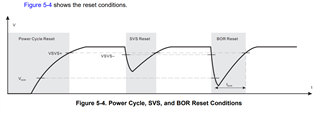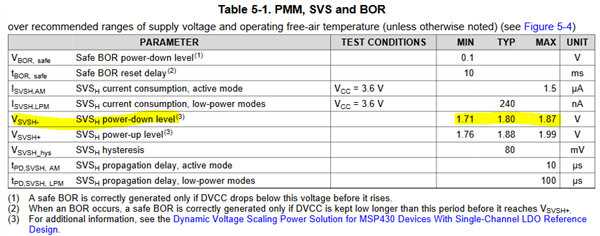When the VCC voltage is 2V, use pin P1.5 to output a high level to drive a MOSFET, and then enter the LMP4 state. When the VCC voltage drops by 1.5V, can P1.5 still maintain the output high level?
We understand that it is possible for others to use PIC16LF1832, and we want to use it to achieve the same function.

When powered by solar energy, what is the reset current of this IC when the voltage is 2V?
In practical applications, after resetting FR2310, pin P1.5 outputs a high level and immediately enters LMP4 state. Is there any way to reduce the reset current?
Because our solar panels can only provide a current of 10uA, at 1.9V, we found that FR2310 periodically resets, causing voltage instability. Once the reset is successful, 10uA can make it work stably.



